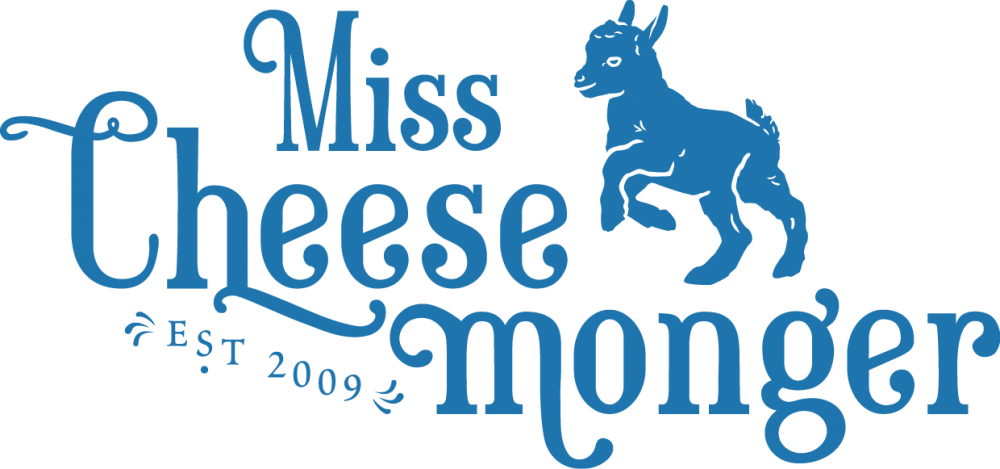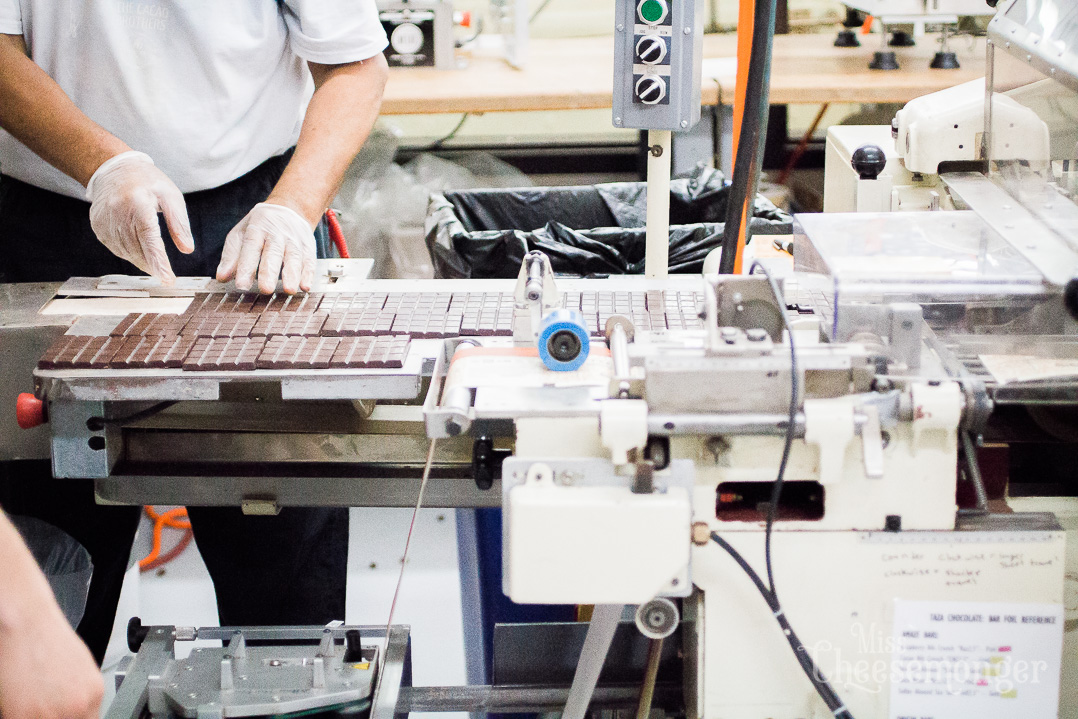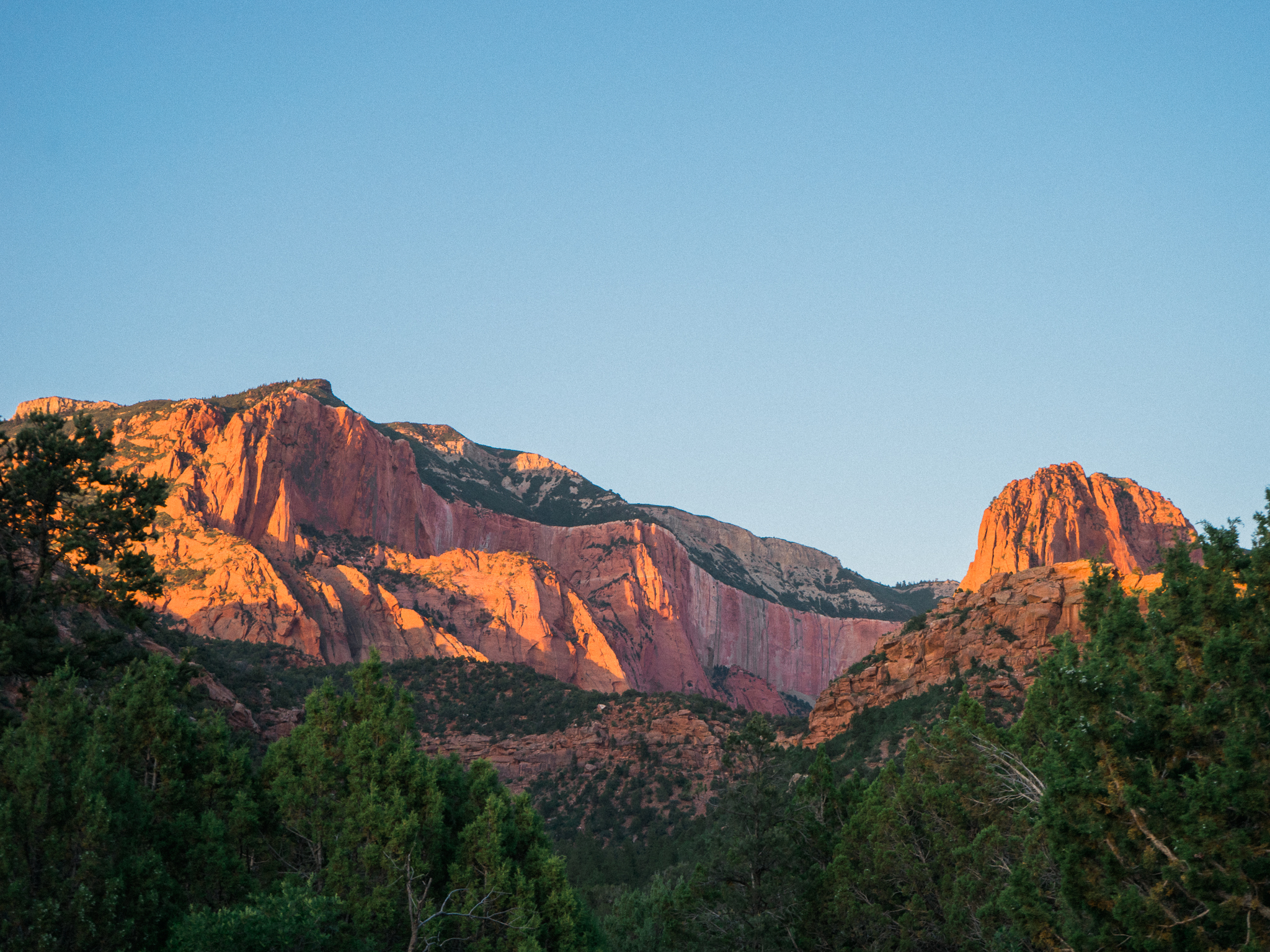Hello my lovelies! M. Cheesemonger and I were away on the east coast for my college reunion and vacation, but I’m finally back in San Francisco with a ton of photos and stories to share with you! One of the first stops on our trip was Taza Chocolate (affiliate link). I have loved their products for years! There was even a point where I was eating ½ a Chocolate Mexicano disc a day. That was a chocolate-heavy time. I love Taza Chocolate’s granular texture, fruity, bright flavors, and unusual disc shape. Now, the company is expanding far beyond just chocolate discs, and M. Cheesemonger and I were given a behind-the-scenes peek at how it all happens.
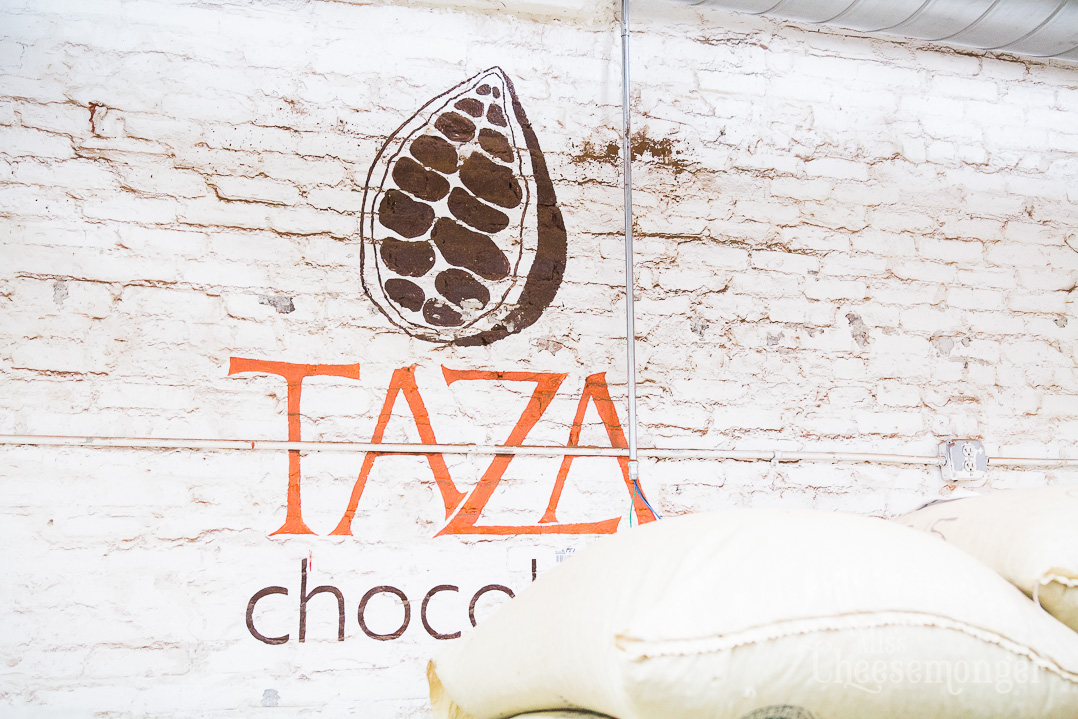
Our guide was the knowledgeable and bubbly Suhayl, who explained the chocolate making process from plant to bar. Taza sources cocoa beans from around the world while remaining mindful of its carbon footprint, its commitment to flavor, and relations with local farmers. A lot of their beans are from the Dominican Republic and Belize, but Suhayl told me that they are going to be sourcing cacao beans directly from Haiti soon (the first US chocolate maker to do so!), so we will start seeing chocolate bars from Haitian beans next year!
I learned that Belize is on the supply list because Alex Whitmore, Taza’s founder, helped found Maya Mountain Cacao, an organization that supports Belizean cacao farmers, and connects them with fine chocolate makers. According to their website, other favorite chocolatiers like Mast Brothers, Dandelion Chocolate, Dick Taylor Craft Chocolate, and Ritual Chocolate all source from Maya Mountain.
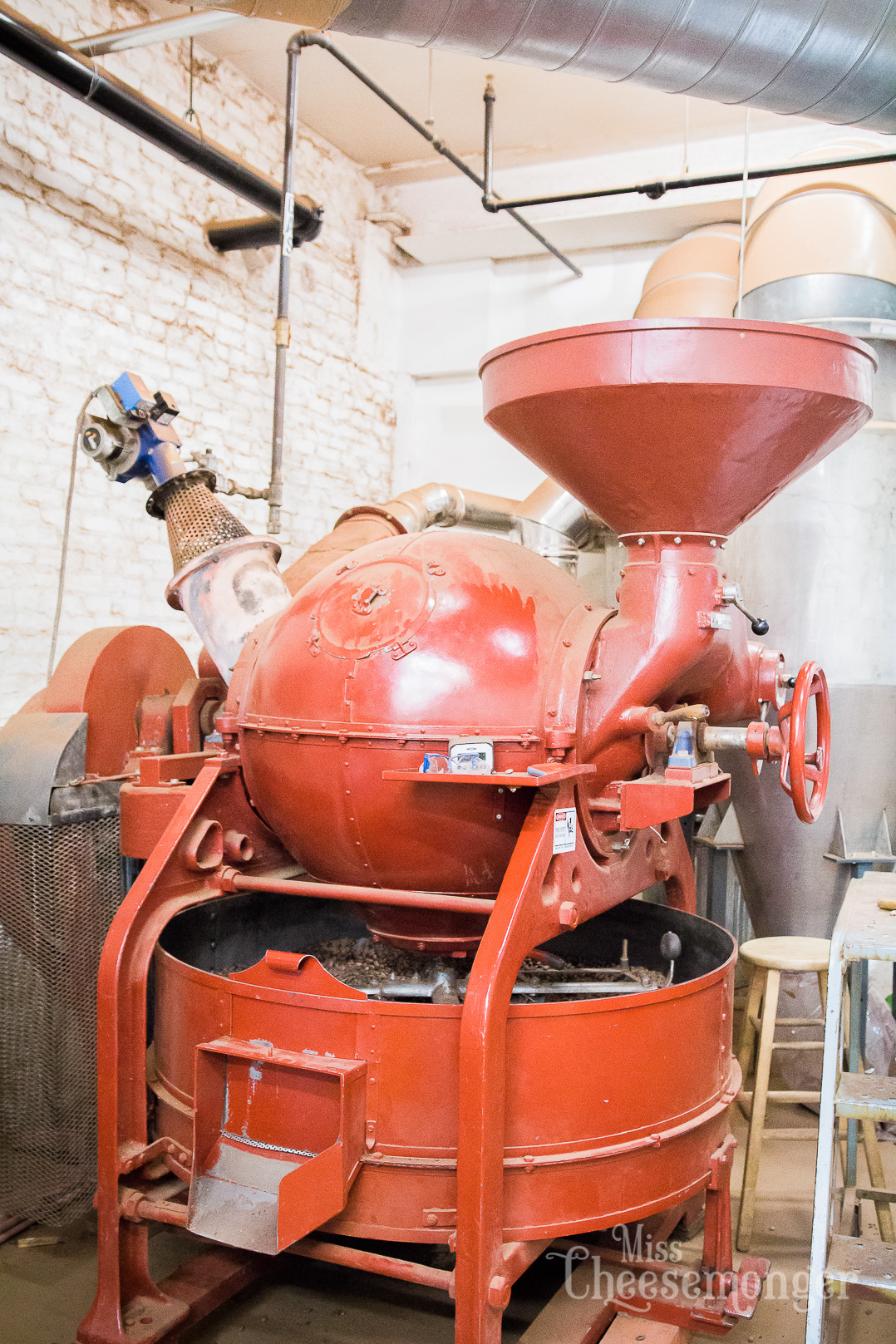
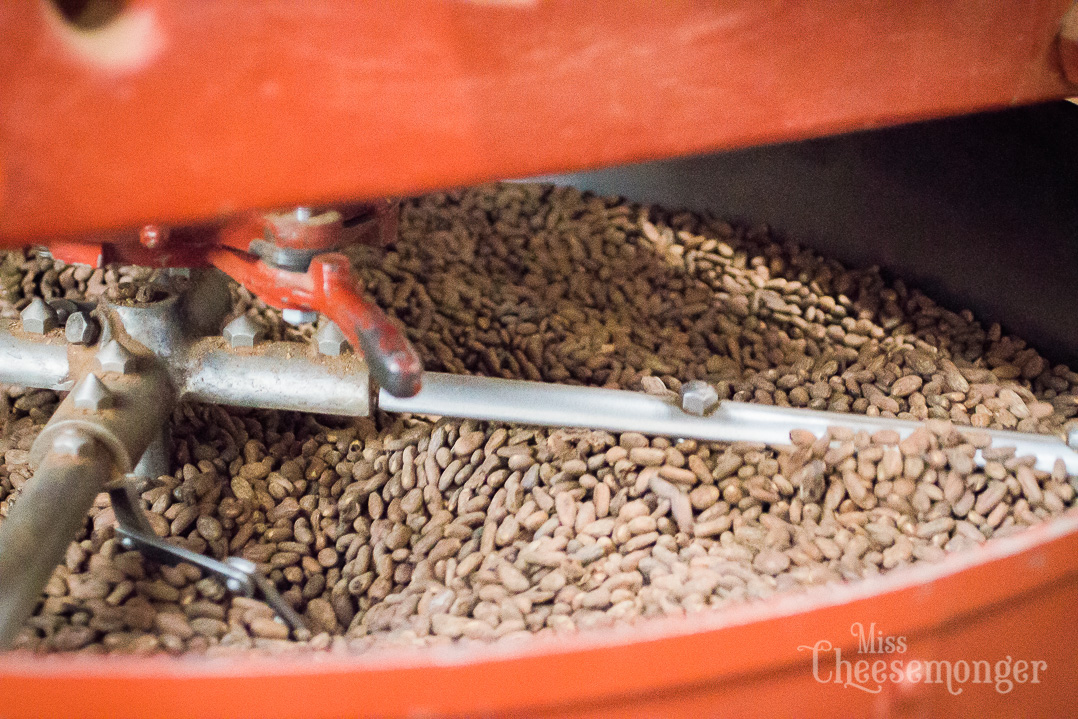
We began our tour in the roaring roasting and winnowing room, where an enormous vintage roasting machine dominated the far corners, and a massive vintage winnower, direct from the Dominican Republic, dominated the area near the entrance. I was more than a little mesmerized by the cacao beans turning through the roaster, 200 lbs to a batch. The winnower was like a magical chocolate box. It accepts roasted cacao beans at the top, then crushes the shells away to expose the tasty nibs inside—these nibs will eventually become chocolate bars or discs, or chocolate-covered cacao nibs. Compressed air blows shell pieces away, while the nibs fall to waiting bins below.
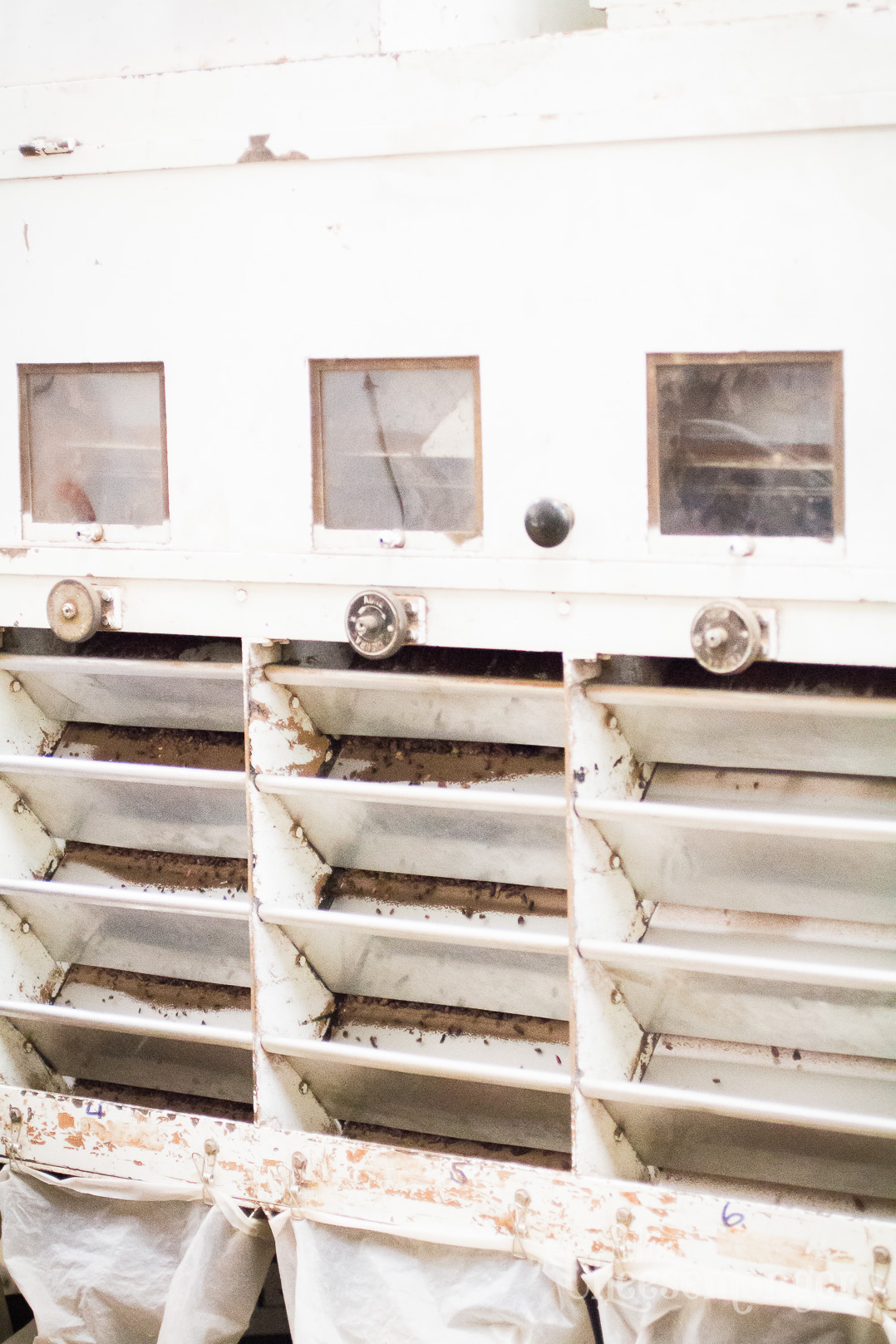
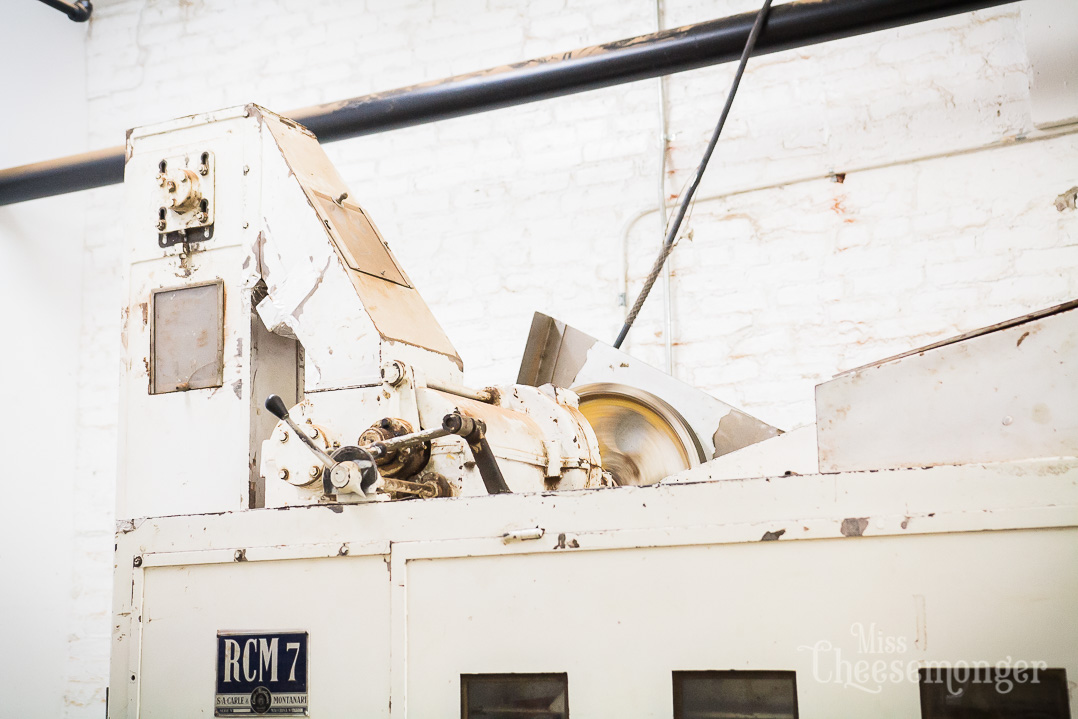
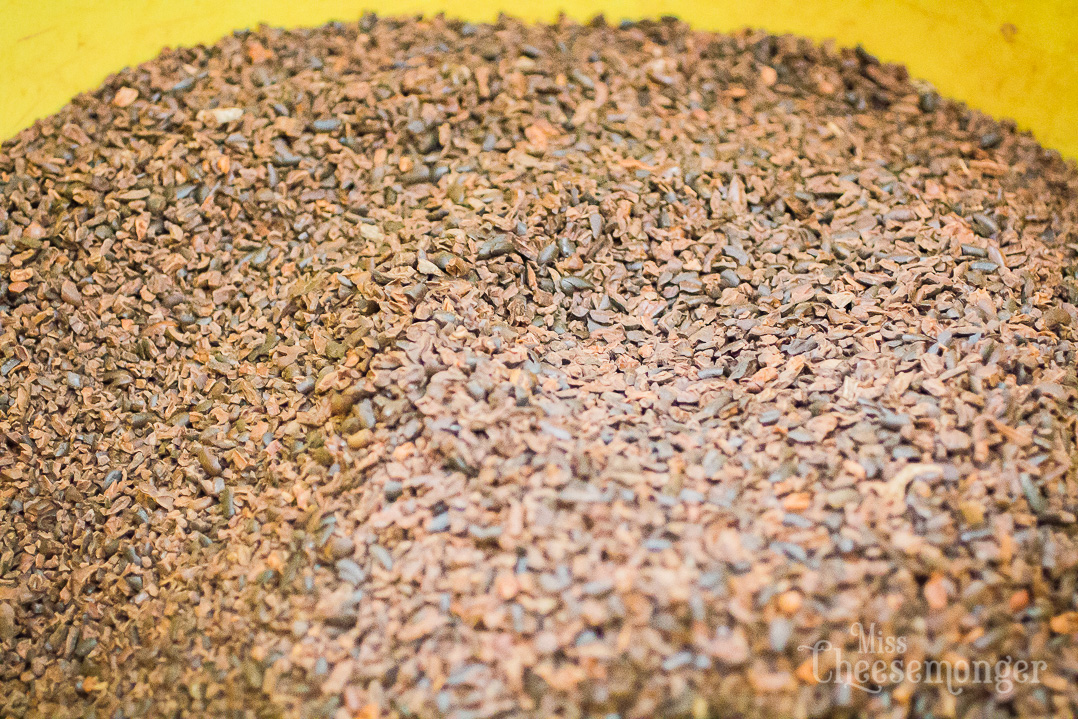
The bins are moved to the grinding room, a warm room full of holding vats and molinos, or mills, and an enormous roll refiner made of granite. The nibs first pass through a blue vintage mill equipped with a volcanic rock grinding stone. This breaks them down enough so that they become what is called chocolate liquor (pure cacao in liquid form). The right amount of organic cane sugar is added, and the ensemble, now called cocoa or chocolate mass, passes through overhead pipes to a second red mill for another grind. Depending what product is being created, the chocolate may or may not pass through a third refiner, fitted on with an enormous roll of granite. Taza’s Amazebars and Stone Ground Chocolate receive this extra refining, while their discs are milled just twice. This minimal refining is, after all, what gives Taza chocolates their granular unique texture!
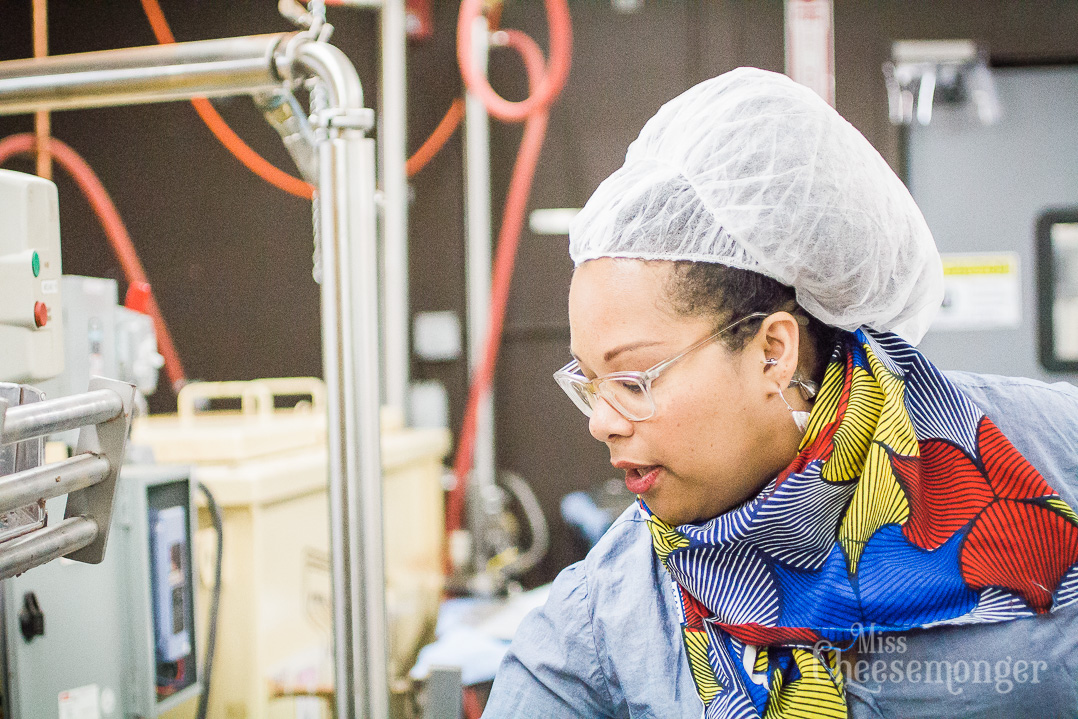
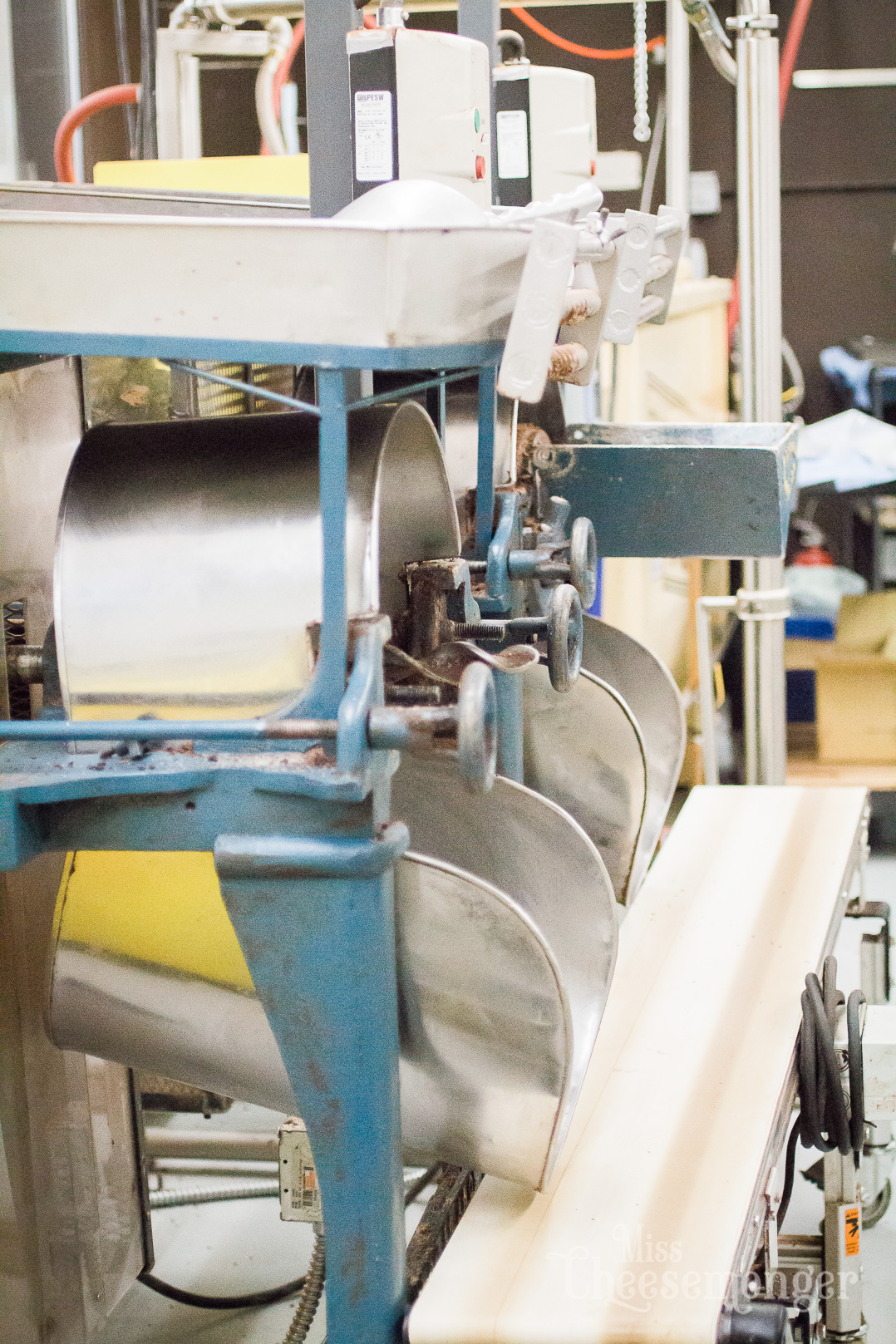

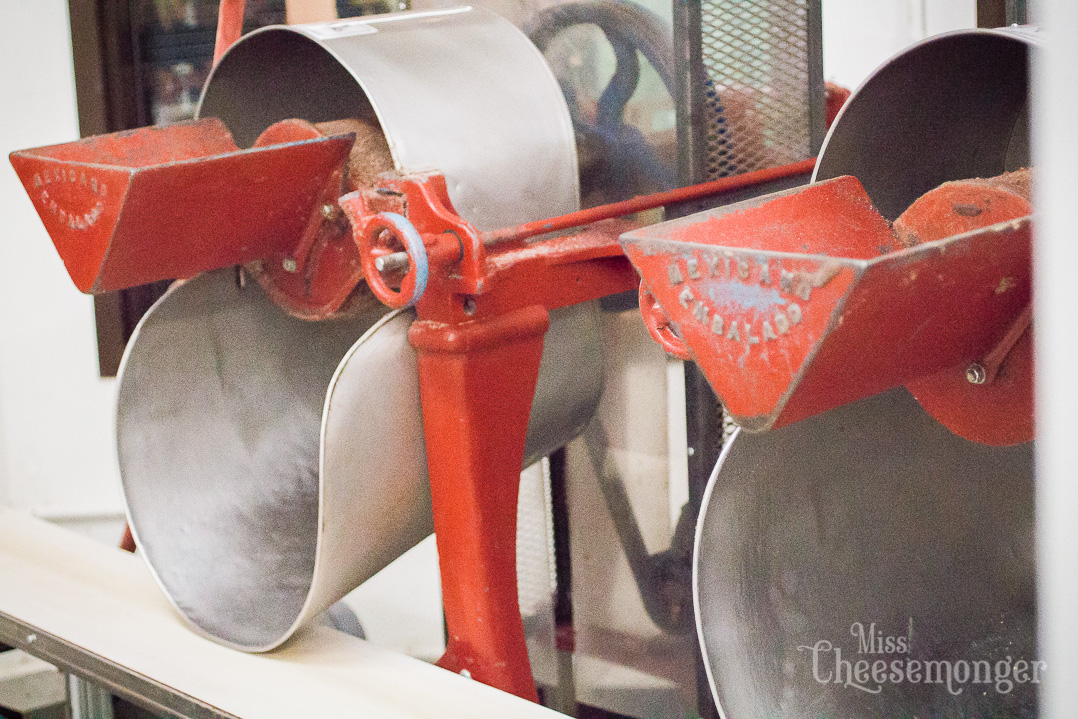
After the chocolate is ground properly, it moves to the tempering machine, which works the chocolate to make it more smooth and shelf stable, and give it its snappy texture. The chocolate is injected into molds, is cooled for a few minutes, then wrapped.

I loved seeing the rows of seafoam green chocolate molds! We got to see the wrapping room as well. I admit, although this is the last phase of the process, and the chocolate is already made, I was kind of mesmerized by watching wrapping take place. Taza has three different machines to manage wrapping, and they all are hypnotizing. It must be because of the gold foil. I’m such a sucker for gold anything! We also caught a glimpse of founder Alex Whitmore himself troubleshooting something on one of the machines.
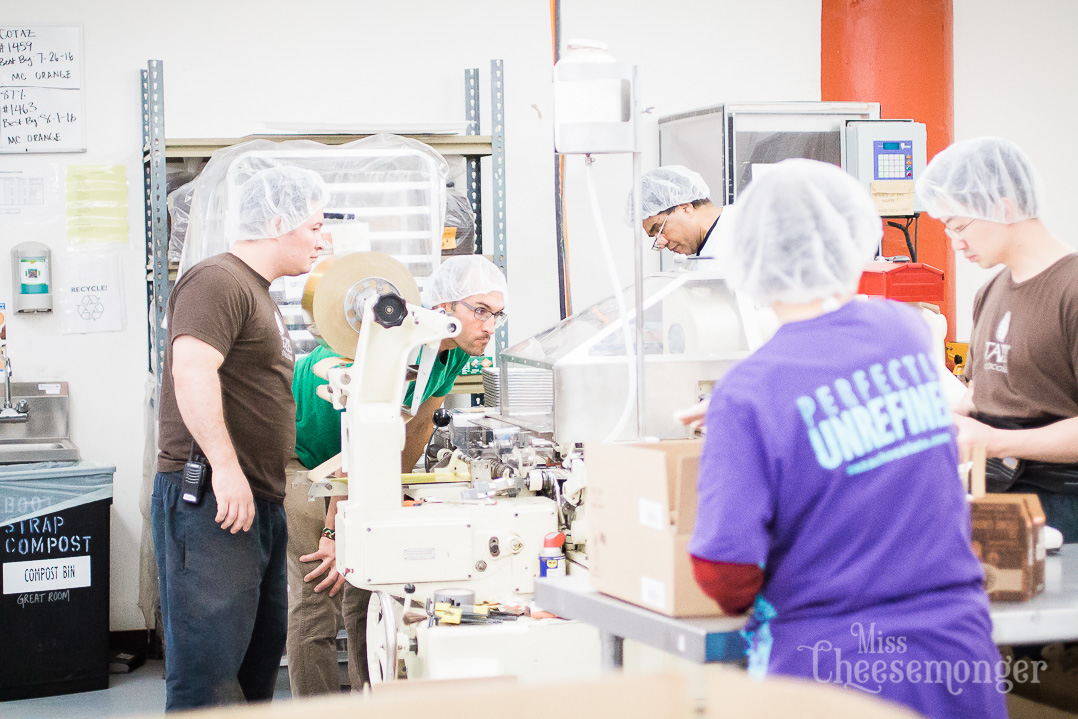
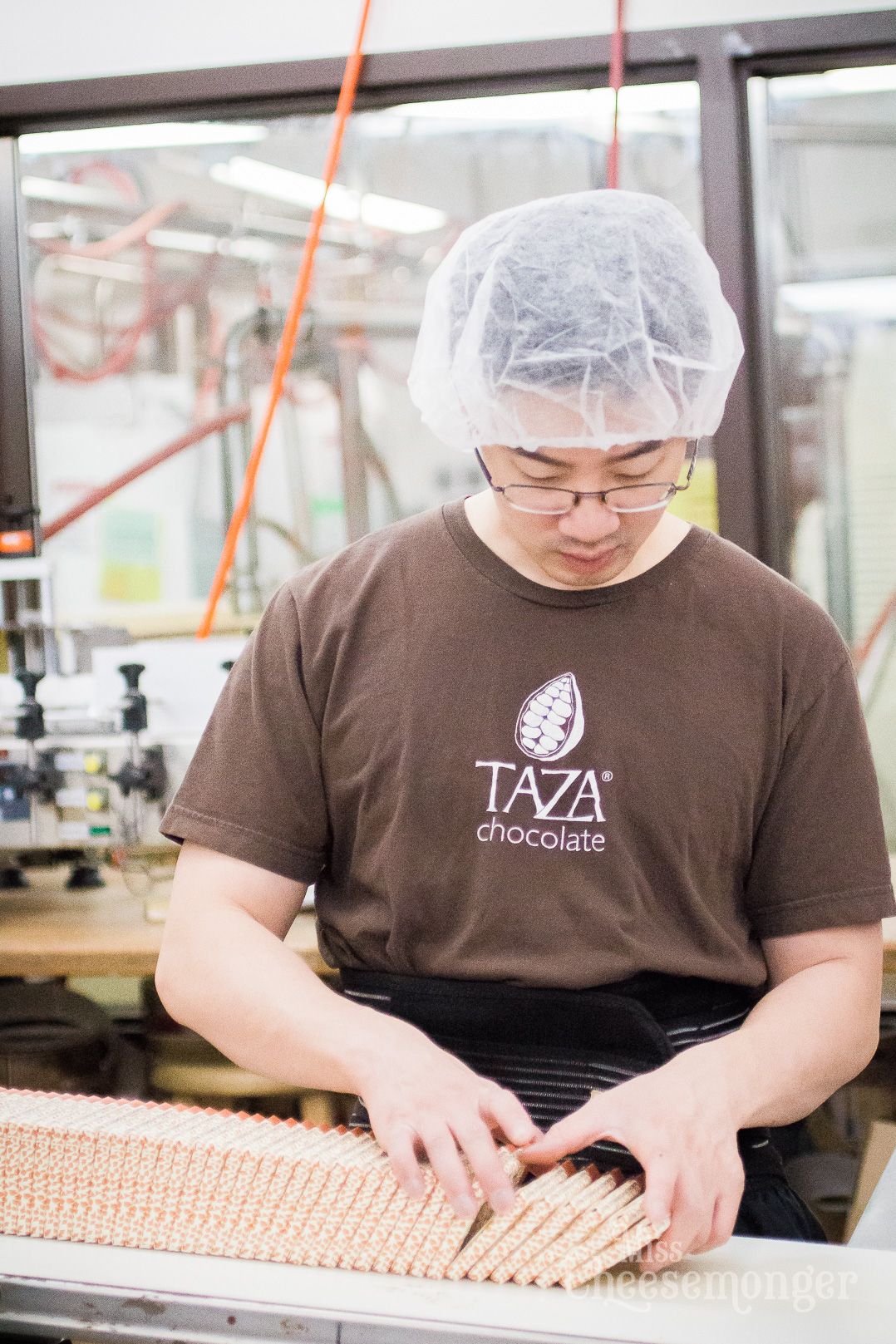
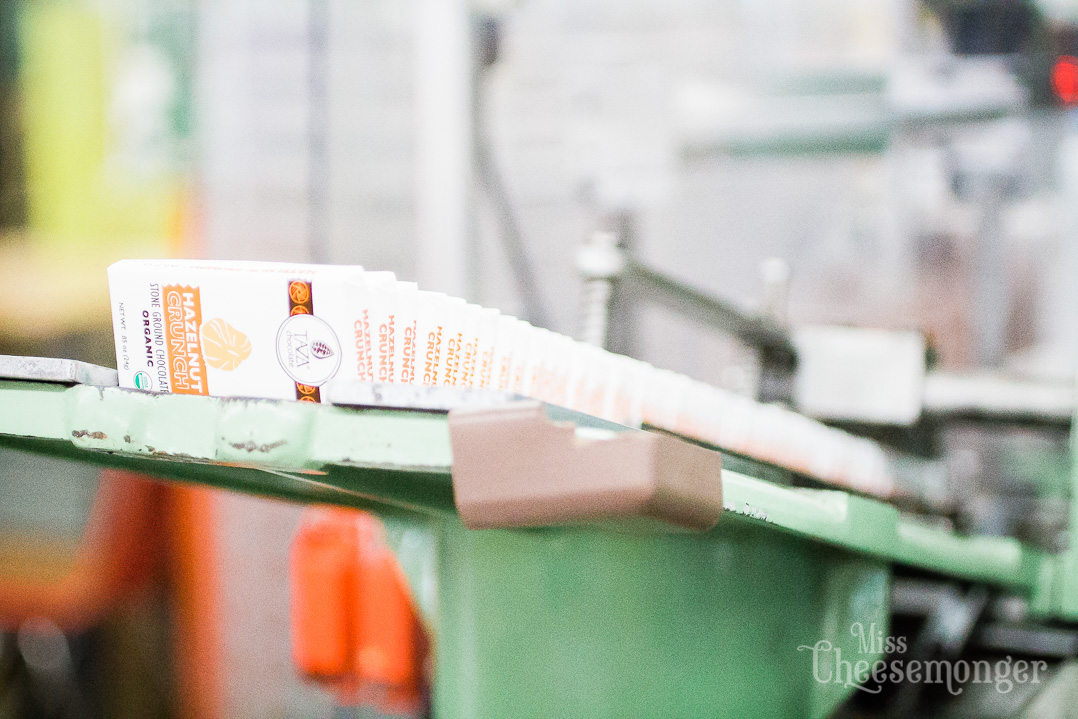
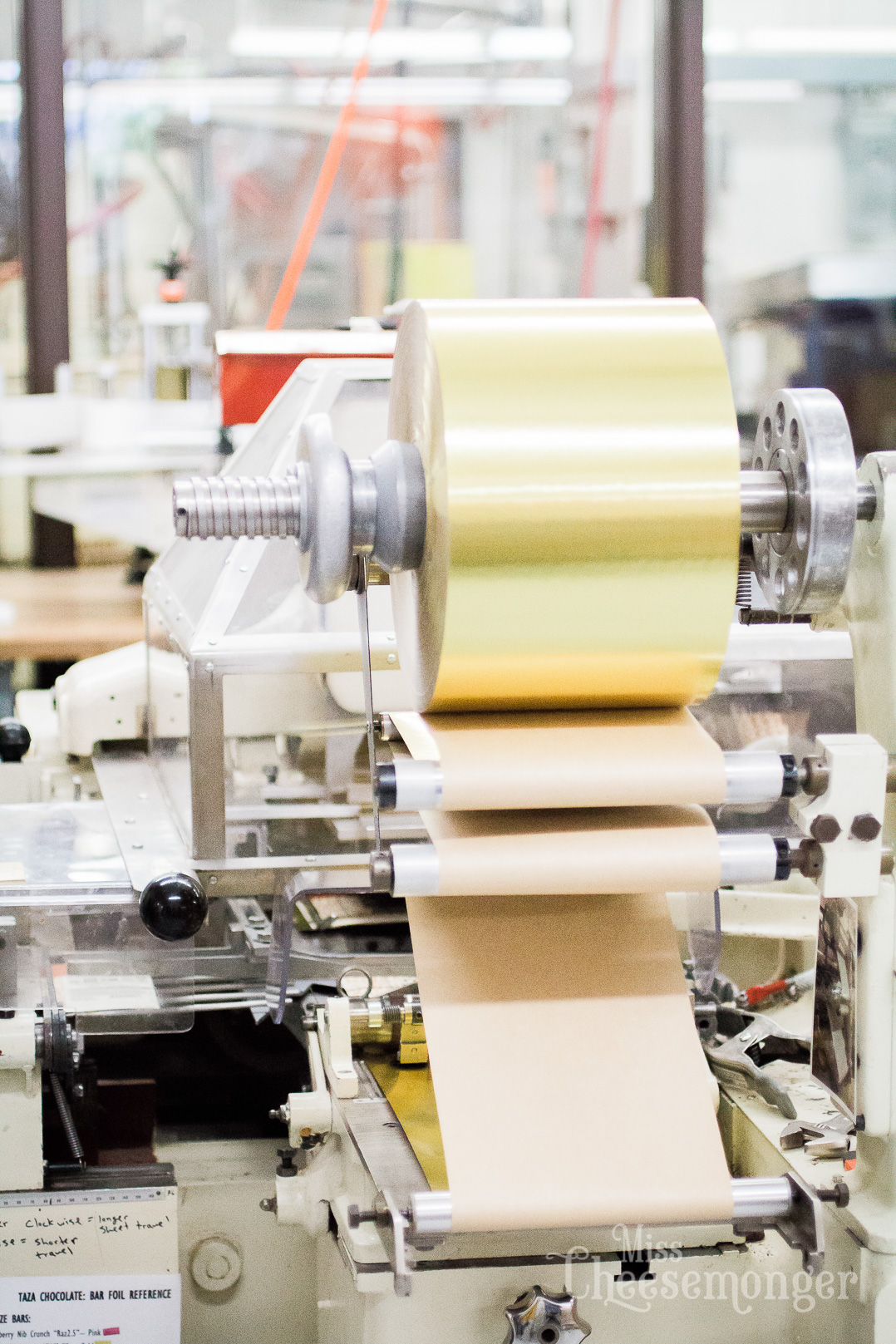
It was fitting we concluded in the store out in front, decorated to evoke the Mexican tradition it from which it draws inspiration. The store is open to the public, and Taza does indeed give public tours of its Somerville factory.
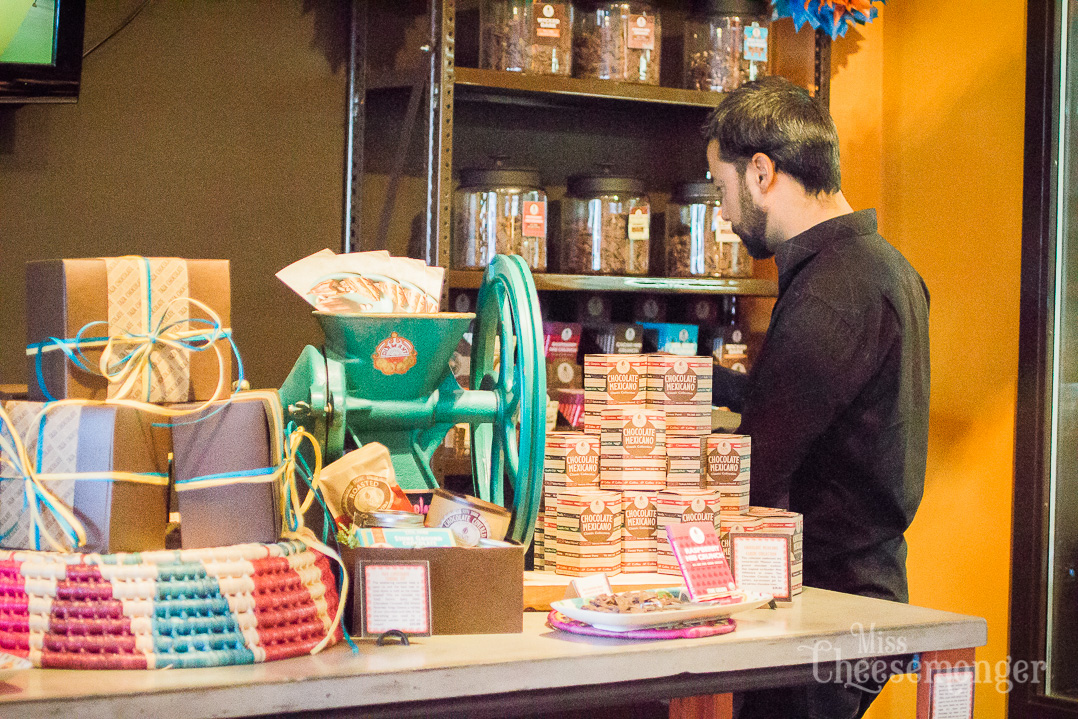
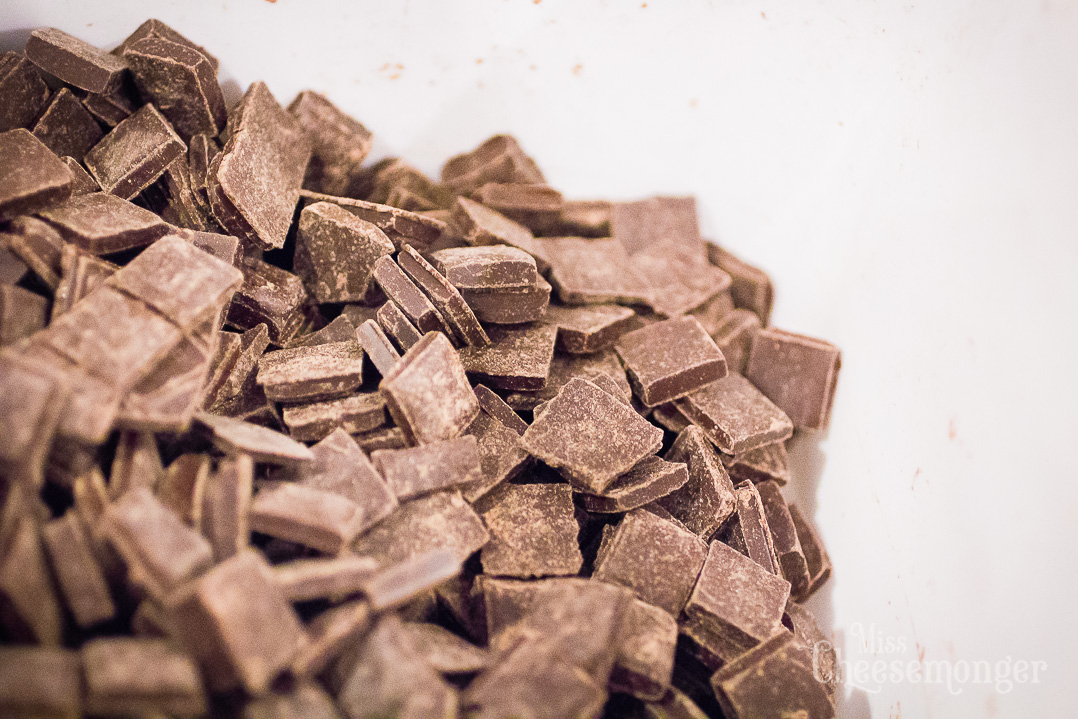
Thanks so much for the visit, Taza! Be on the lookout for a chocolate and cheese pairing later this summer, but if you want to find ways to use your Taza chocolate bars, maybe start with a classic hot chocolate (Here’s Taza’s recipe below! They have many more on their website.)
Mexican Hot Chocolate
Serves 2
Ingredients
* 2.7 oz package Taza Chocolate Mexicano (any flavor)
* 2 cups milk, soy milk, almond milk, or water
* Salt to taste
Preparation
1. Roughly chop or grate the chocolate and set aside.
2. Heat two cups of milk or water (I like water!) in a small saucepan over medium heat to just below a simmer.
3. Remove the water from heat and add a pinch of salt.
4. Slowly mix in the chocolate, stirring frequently until dissolved.
5. When the chocolate is dissolved, return the mixture to the stove and re-warm over low heat.
6. While the chocolate is warming, use a whisk or molinillo (a traditional Mexican whisk) to froth the chocolate.
7. When the chocolate is hot and frothy, remove from heat and serve.
Follow me on Instagram, Facebook, Pinterest, Twitter, Youtube,
& my mailing list!
